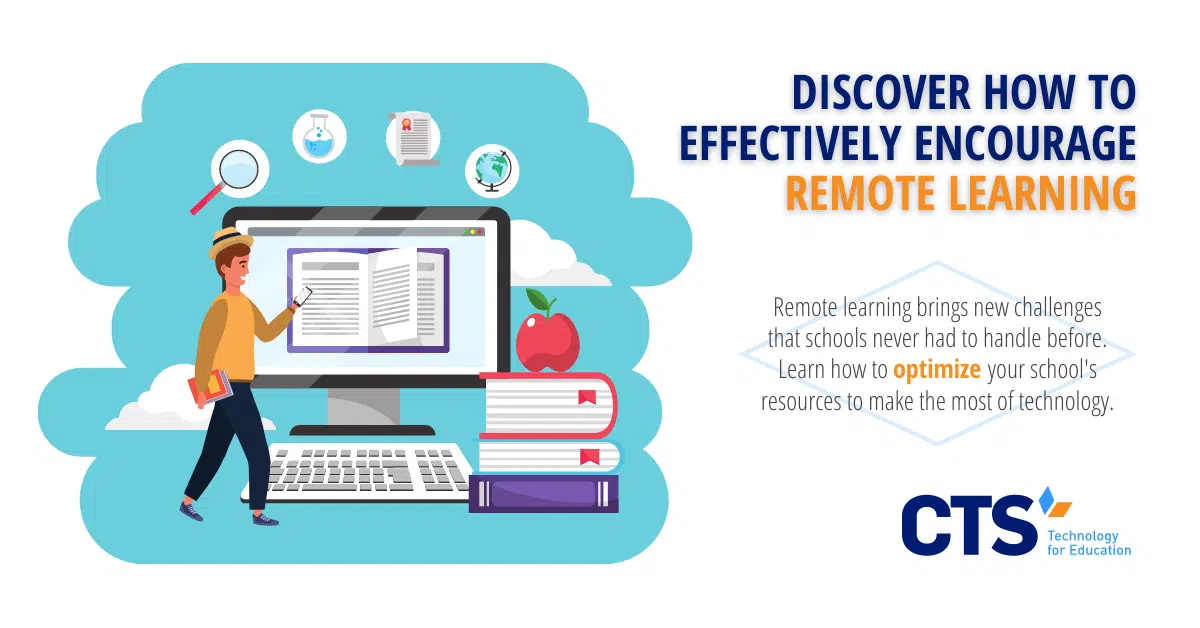Schools need effective remote learning techniques—now more than ever.
With the onset of the COVID-19 pandemic, schools scrambled to outfit their students with enough Chromebooks, wifi hotspots, and other e-learning tools to support effective remote learning efforts. While it wasn’t always easy—particularly for parents who couldn’t afford to stay home with their children—some schools ultimately reported at least some semblance of an online learning routine, doing the best they could under less-than-ideal circumstances.
The past six months have shown not only just how resilient schools, teachers, and families can be, but also what aspects of online learning make for effective remote instruction. How should teachers approach discipline, attendance, and group work via Zoom? How can schools best address inequities between students from different socioeconomic backgrounds and different degrees of technology fluency? And what are the best strategies, both now and in the event of additional lockdowns, to ensure students don’t fall behind?
Keep your device inventory current to facilitate rapid technology deployment.
First, as school leaders across the country know, the ability to quickly distribute student technology is crucial to effective remote learning efforts. Without Chromebooks, wifi hotspots, and other tech. accessories at their disposal, students will quickly fall behind or, worse, fail to engage in remote instruction altogether.
To this end, it’s important for school leaders to keep their technology inventories current, working with their school technology provider or in-house team to pinpoint the location of each and every device in their school’s technology fleet. Doing so not only allows schools to effectively collect devices from students when they return to school, but also gives them the ability to analyze whether their current device allocations make sense given their student population.
For instance, does it necessarily make sense to assign laptops to students who already have functioning devices at home? Probably not. The same goes for any number of tech. accessories, particularly wifi hotspots, that “make or break” a student’s ability to engage in effective remote learning.
Identify families with the highest need and target technology resources accordingly.
Identifying families most in need—now, rather than later—can further support schools’ resource allocation decisions. Conducting surveys in advance of a potential school closure can help administrators decide which families most need the school’s limited inventory of technology devices.
This process not only maximizes the number of students able to participate in remote learning, but also eases the burden on teachers, who must often devise alternative methods for reaching those students lacking regular technology or internet access. Some school districts have gone even further, conducting analyses of their students’ zip codes and addresses to deploy buses equipped with wifi hotspots to neighborhoods that generally lack internet access.
Be transparent with families about the metrics for both closures and re-opening.
Of course, and it almost goes without saying, transparent, regular communication by school leaders with families is key to effective remote learning. When families don’t know whether their child’s school will be in-person or remote next week, they can’t effectively plan their own days, much less request off from work, if needed, in a timely manner.
To address these challenges, schools must establish—at the direction of their district and / or local health authorities—clear criteria under which they will and will not close or re-open and regularly update families on any relevant metrics. Even if a school remains open for the time being, an increase in the school’s positivity rate or some other measure of COVID’s spread can allow families to begin planning for a potentially difficult transition back to remote learning.
Although many families will still struggle or, at the very least, be unhappy with a school closure, schools can at least mitigate some of the disruption to families’ daily routines through consistent, regular communication tied to hard-and-fast data points.
Create a strong attendance plan now and conduct rigorous follow-up with families.
In the event a school does decide to close, it’s crucial that it rigorously track the attendance of its students. A Chromebook or wifi hotspot is of little use in the hands of an absent student.
Similarly, teachers can waste valuable instructional time tracking down students who don’t appear in their Zoom meeting room, diminishing the chance for those students who are in attendance to fully access course material.
To address this challenge, schools should establish clear, consistent protocols through which teachers report their daily attendance to a member of the leadership team or main office staff, who then conducts follow-up with families to determine the reason for the student’s absence. Lifting this burden off of teachers not only yields increased instructional time, but also allows the school leadership team to centralize their school’s attendance information and create a shared knowledge base that facilitates effective triaging.
Here, too, a school should proactively identify those families most at risk of low attendance during remote learning. Whether through qualitative data or quantitative measures of a student’s prior attendance, schools can use their existing knowledge to determine which students will likely require more aggressive attendance follow-up and begin to plan accordingly. Students with parents required to work outside the home or who have younger siblings, for example, may be at particular risk of low attendance. Establishing a clear plan to follow-up with this subset of a school’s population can pay dividends in the event of a school closure.
Effective remote learning depends on relationships: create opportunities for students to interact with one another during the school day.
Even as students begin attending classes remotely, teachers should still set aside time for socialization during the school day. Whether it’s group work, debates, or classroom culture-building activities, schools should never fail to address the social-emotional needs of their students, who will undoubtedly miss seeing their peers and teachers in-person.
The socialization provided by in-person schooling is critical to a child’s overall wellbeing, so prioritizing teaching practices that integrate peer-to-peer collaboration can help fill at least some of the gaps created by a school closure.
Plan ahead for key school events, including parent-teacher conferences and graduation.
Despite the challenges of remote learning, students still deserve to experience some of the hallmarks of K-12 education, including parent-teacher conferences, graduation, and other school-wide events held each year.
The key, however, is to start planning now. Although students and families won’t be in the building, they’ll still require clear protocols for accessing Zoom meeting rooms, a detailed schedule that tells them when and where to “transition” to the next activity, and a troubleshooting guide to address any issues they may experience with technology during the course of an event.
Just as peer-to-peer socialization is critical to a child’s overall wellbeing, so too is a sense of routine and tradition, which can not only allow students to experience a degree of normalcy, but also build school culture between students at a time when in-person contact is severely limited. Investing in such events now, despite the constraints of remote learning, can set the stage for an effective school culture reset when students ultimately return to school.
Weave technology use into your regular professional development sessions to drive effective remote learning.
Regardless of whether a school is currently open or closed, leaders can help prepare their staff for remote learning by regularly weaving best technology practices into their professional development offerings. Even if a school remains open for the remainder of the pandemic, schools can still benefit by including some of the positive aspects of remote learning in their in-person programming.
Even simple professional development sessions addressing topics like Gmail, Outlook, and Google Drive best practices can make a world of difference for teachers not accustomed to widespread, regular technology use in their daily instruction. Administrators can create leadership opportunities for more tech-savvy staff members, allowing particularly skilled teachers to conduct professional development sessions addressing more advanced topics or exposing their peers to specialized online instructional platforms like DreamBox, Class Dojo, and BrainPop.
While these efforts will yield clear, positive benefits during remote learning, teachers are also likely to carry what they’ve learned back to in-person instruction, where online platforms that differentiate instruction in real-time allow teachers to target their interventions more effectively and provide advanced learners with the opportunity for further content mastery.
At CTS, we help schools optimize their technology resources to create effective remote learning programs.
Our team has worked with more than 60 schools across the United States to build effective remote learning programs. As schools have continued to navigate the challenges of distance learning, we’ve been there every step of the way to ensure that school leaders continue to pursue their unique missions.
From school technology trainings, guidance on complex educational technology projects, and forward-thinking recommendations for educational data use, our team is ready to help schools with their most pressing educational technology challenges both now and, ultimately, when in-person instruction resumes. Contact us today to learn more about our range of technology services and how we can help your school accomplish its unique mission.




